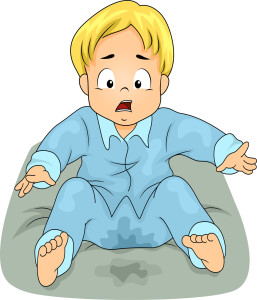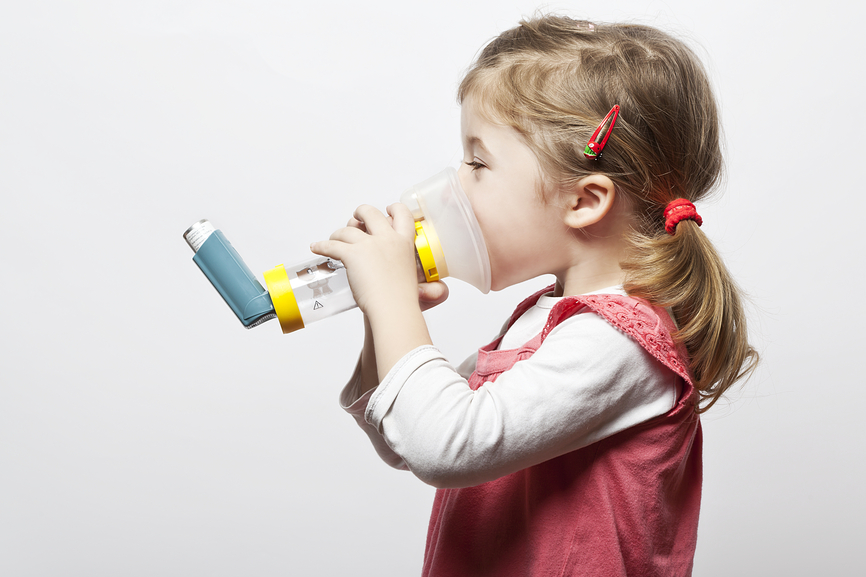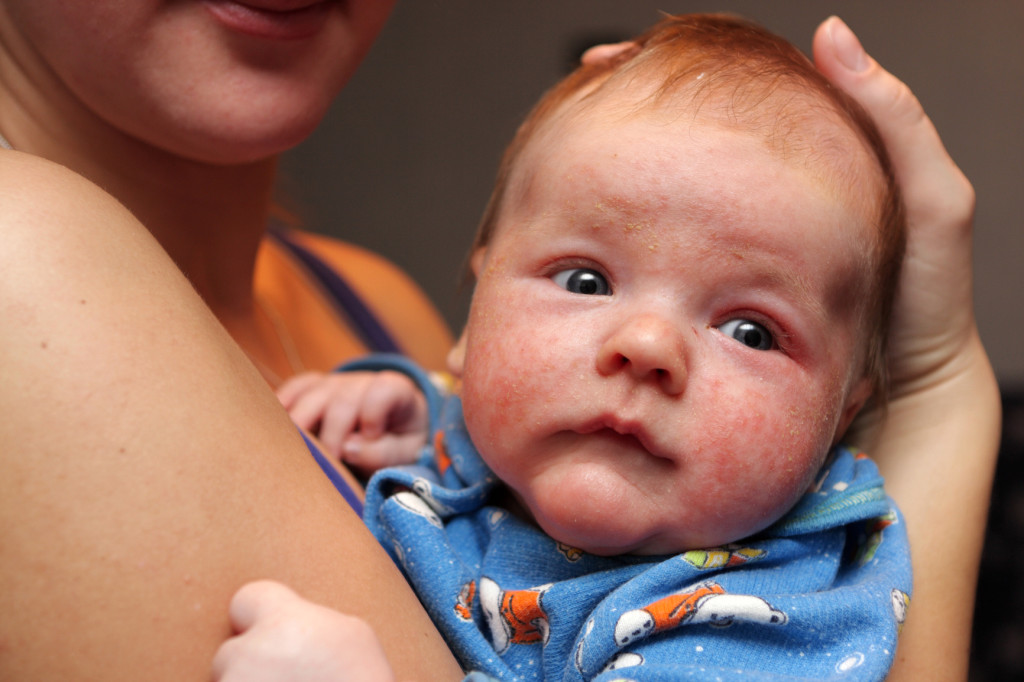Six Common Childhood Conditions
Six very common childhood conditions are often manifestations of allergy in children and intolerance, but they are seldom treated as allergic problems. Usually unsuspected as allergic in nature, these conditions are colic in infants, ear infections, bed-wetting, eczema, asthma and hyperactivity.
1. Colic
Colic is so common that newborn babies are almost expected to have it. However, James C. Breneman, MD considers it to be “a definite manifestation of intolerance, much of which is allergic.” In this condition, and especially in infants whose entire diet is milk, cow’s milk is overwhelmingly the leading allergen. A baby who is breast-fed may still develop an allergy to cow’s milk if the mother ingests milk, cheese, yogurt or other dairy products.

Intestinal biopsies have been performed on infants with colic after they were fed cow’s milk for seven days. Increased IgE levels, indicating allergy, have been found in the cells of the biopsy samples. Breast-milk is in the raw state. It has not been cooked or heated, so it is a very enzyme-dense product. The enzymes contained in breast milk help the baby digest the milk, taking stress off its immature digestive tract. Infant formula contain no enzymes and force the infant’s digestive organs to do all the work. Cow’s milk formula is higher in protein and fat than breastmilk, giving the baby’s digestive tract even more of a workout. If the baby’s digestive tract is unable to produce sufficient enzymes to digest the cow’s milk formula, colic will result.
Colic is easily remedies in a baby. In the breast-fed baby, the mother should eliminate all sources of dairy products from her diet. The baby should be given nutritional plant enzymes each time it is fed. For the formula fed baby, it is best to rotate formulas, and each time baby is fed, supplement with nutritional plant enzymes.
Common Symptoms of food allergy in children
Unfortunately, colic is only one symptom of food allergy in a baby. Here is a list of others:
- Bloodhot eyes
- bronchitis
- chronic cough
- cold sores
- hives or welts
- irritability
- loose bowels
- nasal stuffiness, sniffing, snorting, sneezing
- colic
- diaper rash, redness at anus or on cheeks
- eczema
- frequent colds
- fussy eater
- nose rubbing
- rashes
- tiny broken blood vessels under the skin
- wheezing
It is ironic that we feed the most allergenic food known to man to our babies and children. B-lactoglobulin, a substance found in cow’s milk, but not in human milk, is foreign to the baby’s digestive tract. Newborn babies have increased gastrointestinal permeability to B-lactoglobulin, probably because of a lack of enzymes to digest it. Casein is another of the most allergenic proteins in milk.
Allergy to milk creates gastrointestinal bleeding, which leads to iron-deficiency anemia in infants, due to a loss of blood in the stool. If the blood comes from high up in the intestinal tract, it will appear as dark or black and is not readily recognized. This blood loss can go undetected for long periods resulting in iron deficiency in the child.
Other diseases that have been associated with milk include celiac disease, chronic diarrhea, various gastroenteropathies, pulmonary manifestations and fibrosis.
2. Ear Infection – Childhood’s Most Common Illness
Each year 30 million children in the United States are treated for middle ear infections reflecting a 300% increase in the last twenty years.
Middle ear infection is the number one condition for doctor visits by children under the age of 15. Current estimates are that 65% of children will have at least one ear infection before the age of one and 90% will have at least one ear infection before the age of three. Middle ear infection is the most common reason for surgery in children and it is the leading cause of deafness in children.

Understanding Ear Infection
The structure of a young child’s ear is different than an adult’s ear. In a child, the immature Eustachian tube is shorter and more horizontal than in an adult. As a child grows, a characteristic downward curve develops until, at maturity, there is a pronounced downward angle that is developed. This allows fluids to drain more readily and accounts for why some children seem to outgrow their symptoms as they get older. However, even when children appear to outgrow their symptoms, the underlying or precipitating mechanism, which originally produced the ear problem, may still be in place, often resulting in new symptoms appearing somewhere else in the child’s body.
Conventional Treatment
Antibiotics are the mainstay of conventional treatment for middle ear infections. An estimated 25 million prescriptions (over one billion individual doses) for antibiotics are written for children with ear infection each year in the United States.
Are Antibiotics Effective?
Although antibiotics are the standard treatment, they provide only temporary, symptomatic relief and no protection against recurring episodes. A recent study done on the effectiveness of antibiotics for middle ear infection demonstrated that after treatment with amoxicillin, 69% of the children still had Otitis media (middle ear inflammation). Another study showed that amoxicillin administration conferred no more protection against acute episodes than a placebo.
Numerous studies show that antibiotics do not prevent the reocurrence of ear infection. According to David S. Hurst, MD, after twenty-five years of practice as an ear, nose and throat surgeon, “Conventional therapy with antibiotics has proven to be ineffective, yet is still maintained in the current management paradigm.”
Allergy in the Ears
Is there evidence that allergens can produce changes in the middle ear? In his book, Childhood Ear Infections, Dr. Michael Schmidt makes the statement, “Allergens can cause direct changes within the middle ear and Eustachian tube.” Dr. Schmidt cites as an example that Dr. Robert O’Conner and his colleagues observed significant and rapid pressure changes take place in the middle ear of children when their nasal passages were exposed to allergens. In other studies, allergens have been found capable of causing obstruction of the Eustrachian tube for up to fourteen days. For over fifty years, allergy in children has been shown to play a role in middle ear syndrome. Doctors are increasingly speaking out and identifying the ear as the target organ for underlying allergies in children, especially food allergies. In his book, Childhood Illness and the Allergy Connection, Zoltan Rona, MD, makes the statement; “Allergies to milk and other common foods and the frequent indiscriminate use of prescription antibiotics are at the root of most infections in children, especially middle-ear infections.”
How To Help Your Child Recover from An Ear Infection
Prevention is the most important part of any health program, but it is never too late to begin. Regardless of how many antibiotics and tubal surgeries that your child may have experienced, there is still much you can do to prevent further episodes. Developed over 30 years of clinical experience, the following program has proven to be an effective, natural method to resolve childhood ear infections:
- Supplement with probiotics to repopulate the colon.
- Include grapefruit seed extract for its anti-fungal, antiviral and antibacterial properties. As is has a very sour and bitter taste, it should be mixed into a favourite food or a bit of maple or natural fruit syrup.
- Give nutritional plant enzymes each time the child eats, even snacks. Protease should be the first ingredient listed on the label, along with amylase, lipase and cellulase. Capsules can be opened and the contents mixed with food if the child is too young to swallow capsules.
- Eliminate all dairy products. Also eliminate all products containing refined sugar, peanuts and peanut butter. This alone will help the digestive tract improve function because it eliminates the foods that place the greatest demand upon it.
- Use mullein oil drops, available at health food stores, nightly for two weeks. A good formula contains mullein oil, hypericum oil and garlic oil.
This program covers only the usual or common case. IF your child still demonstrates symptoms after six weeks of adherence to this program, additional advice should be sought.
3. Bed-Wetting
Bedwetting is a common problem of childhood. Recent statistics show 20% to 25% of children are still affected by bedwetting at the age of six. This results in tension and anxiety for both the child and the family. The child’s self-esteem often suffers. Yet medical doctors indicate that there is seldom any physical abnormality with the child. The vast majority of these children have normal urinalysis and normal physical findings, including normal bladder size.
The frequency of bed-wetting tends to decrease as the child grows older with only 2% of cases persisting into adulthood. Medical treatment stresses control of the problem rather than treatment. In 1959, an exhaustive study of bed-wetting was conducted which showed that from 83% to 90% of all primary bedwetting could be controlled by eliminating certain food allergens. In this study, the reactive foods in order of their frequency were: milk (60%), wheat (20%), egg (20%), corn (15%), orange (15%), chocolate (15%) and pork, tomato, peanut, seafood and cinnamon (5% altogether). James C. Breneman, MD, states, “The most convincing data now shows that food allergies are a major cause of bed-wetting.”

Help for bed-wetting
- eliminate all milk and all dairy products
- eliminate all forms of sugar including honey, maple syrup and desserts.
- eliminate any other food known to trigger an allergic or intolerant reaction
- supplement with nutritional plant enzymes every time food is eaten
- populate the colon with probiotics (lactobacillus acidophilus and bifidus)
- supplement with B-complex containing pantothenic acid and chromium to help stabilize blood sugar levels
4. Eczema
Eczema is characterized by itchy, scaly, red, weeping or infected skin. Its typical distribution is on the face, behind the ears, the front of the elbows, back of the knees, wrists and trunk. Sometimes eczema will appear to improve, as the child grows older, only to suddenly reappear.While medical authorities maintain that the cause of eczema is unknown, they do agree that eczema is the most common akin problem of children and allergic eczema is the most common form.
Medical treatment is directed at controlling the condition, rather than looking for the cause. Zoltan Rona, MD, author of Childhood Illness and the Allergy Connection, writes, “Dermatologists usually prescribe cortisone-based creams to treat eczema; they rarely consider the systemic cause of a rash, preferring to suppress the symptoms”.
Causes or triggers?
There are many things which may trigger an outbreak of eczema. Some of these traditional triggers which make eczema worse include:
- excessive scratching of the skin
- moisture, such as sweat
- overheating
- house dust and house mites
- wool or scratchy fabric
- dog or cat dander
- cigarette smoke
- detergent residue in clothes
- soap
While all of the above can exacerbate eczema, they do not cause it. The cause does not start on the skin; the skin is the effect of what is going on internally. The skin is considered the largest organ of the body and it is a major eliminative organ along with the kidneys, bowels, and lungs. Often when the skin erupts in sores, the body is trying to rid itself of internal toxins and metabolic by-products.
Common conditions to children with eczema
Clinical experience demonstrates that six conditions are nearly always present in children who have eczema:
- systemic candida
- food allergies and sensitivities
- poor digestion
- imbalanced colon microflora
- poor food choices
- nutrient deficiencies
Eczema is multicausal; meaning it has more than one cause. The above conditions are all related, with one thing intertwining with the next, resulting in a pattern of conditions which underlie the eczema.
Nutritional Plan To Help With Eczema
All steps should be started together and followed for four to five weeks:
- follow an elimination diet
- culture the colon with probiotics
- supplement with nutritional plant enzymes which contain at least these four enzymes: protease, amylase, lipase, and cellulase. Open capsules and mix with first bite of food and should be taken with each meal and with all snacks.
- include grapefruit seed extract for its antifungal, antiviral and antibacterial properties. It comes is liquid form or capsules. As it has a very sour and bitter taste, it should be mixed into a favourite food or a bit of maple or natural fruit syrup.
- supplement with flax seed oil blend. Children with eczema are usually deficient in EFAs
- apply calendula cream or gel that contains tea tree oil to the eczema patch one to several times a day.
5. Asthma
Asthma has been increasing in incidence over the last few decades. While no one knows for sure, it is estimated that in the United States, there are nearly 15 million Americans with asthma. Of these, nearly 20% experience limitation of their daily activities. Since 1977, the asthma rate has doubled and asthma has become the most common chronic respiratory disease of children.

Asthma is the body’s reaction to many kinds of irritants. Therefore, doctors categorize asthma into the following forms:
- allergic asthma which is asthma caused by allergens.
- non-allergenic asthma, often triggered by infection or environmental chemicals
- asthma resulting from emotional or physical situations (such as exercise)
- intrinsic asthma which is chronic asthma that is not triggered by allergies in children and has no obvious cause.
One category missing in the above asthma types and often not recognized by doctors is asthma as a reaction to foods, either allergic or intolerant.
Common Conditions to Children With Ashtma
- Chronic infection (yeast or fungal, viral, bacterial, or parasitic)
- Food allergy and/or intolerance
- Allergy to inhalants (pollens, grasses, dust, environmental chemicals, etc)
Nutritional Plan To Help With Asthma
Ashtma can be helped to a great extent by the removal of the above stressors. Children respond quickly and have a good chance to become well. When beginning a new program, never discontinue any prescribed medication. Any asthma attacks must always be treated promptly with prescribed medication.
The following protocol is best done under the supervision of a licensed health practitioner.
- Follow a good Candida protocol
- If during the candida protocol you discover that Aspergillus appears to be involved, add homeopathic Aspergillus to the program.
- eliminate all dairy products for at least 8 weeks
- eliminate all forms of sugar and foods containing sugar including honey, molasses, brown sugar and maple syrup.
- in addition, do not include in the diet any other food that appears to be reactive.
- supplement with plant enzymes
- if several foods seem to be reactive, herbs to help heal the intestinal lining should be included
- chiropractic adjustments are also very helpful and tend to speed up recovery time as well as help to make breathing easier.
The above protocol will remove a great deal of stress that the body is experiencing. As asthmatic symptoms begin to improve, individuals usually notice that they require less medication.
6. Hyperactivity
Many of the same factors that create colic, ear-infection and bed-wetting also create hyperactivity, short attention span and behaviour and learning problems. In 1950, a typical classroom averaged one hyperactive child. Today there are five or six hyperactive children per classroom. Children with Attention deficit hyperactive disorder (ADHD) are disruptive, impulsive, exhibit poor concentration, and are easily distracted. They may also be fidgety and irritable and have a variety of learning problems. Studies indicate that 25% to 50% of ADHD children have learning disabilities and around 30% of these children are bed-wetters.

Major areas to address are:
- poor nutrition and faulty digestion
- food allergies and intolerance
- environmental toxins
- yeast overgrowth and parasites
- repeated antibiotics and other medications
All of the above can adversely affect a child’s nervous system resulting in various behavioural abnormalities. For example, children with ear infection due to allergic reactions, often become those who are hyperactive, by receiving repeated doses of antibiotics that lead to yeast overgrowth, which is turn produces a leaky gut, allowing allergy to emerge and weaken the immune system.
Nutritional Plan to Help Children with ADHD
Elimination of allergens (both food and chemical) in the diet and the addition of plant enzyme therapy is a vital step. The child should also be checked for yeast overgrowth and parasites; and a dietary program should be instituted that is specific for the child.
References:
3. Childhood Ear Infections: A Parent’s Guide to Alternative Treatments,
